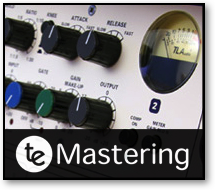





These production tips and tricks are designed to help you make the most of your music. Covering everything from mic technique to post-production, we hope you find them useful!




Industry news, useful links and what’s going on at Tenth Egg
© Tenth Egg Productions 2008




A different approach to music production.

music mastering

Tips and tricks from our engineers to help you with your music making



If you're serious about recording then understanding how to get the best from a microphone is vital. Making the right choices at this first stage in production can make like a lot easier during mixing and ultimately yield far better end results.
Microphone Types: Dynamic & Capacitor : By far the two most popular microphone types found in the studio are the 'dynamic' and 'capacitor'. Selecting the appropriate type for the source material is important because their variant approach to sound capture make them a better fit for different recording roles. In general dynamic microphones are less sensitive and their high frequency response rolls off earlier than their capacitor counterparts. However, they are arguably more robust, can accept higher sound levels and deliver a 'punchier' sound. For example the classic Sure SM58 & SM57 dynamic mics, much beloved of studio engineers, are firm favourites for guitar amp and drum micing. But when it comes to capturing vocals, acoustic instruments or any sound source with high-frequency detail, a capacitor is generally the best choice.
On the technical side, it's important to remember that a capacitor mic requires 'phantom power' to operate. Almost all mixers and stand-alone mic pre-amps will provide this option by way of a button or switch marked '+48v'. Dynamic microphones do not require phantom power, and although in most cases feeding a professional dynamic mic power won't do it any harm, in an ideal world it would be avoided. It's also worth sticking to a plug-in, power-on; power-off, unplug routine to avoid damage to mic or pre-amp.
Tip 15 : Using Microphones 101





Low-cut / high-pass Filter: A common on-mic control is the low-cut /high-pass filter (pictured right) - You'll find something similar on most mixers and stand-alone mic pre-amps. The idea is to filter out all the low frequency sound below a certain frequency (usually somewhere between 40Hz & 150Hz) and thus reduce traffic rumble, microphone stand vibration, and general low frequency resonances which are present in almost all acoustic instruments. Some microphones, such as the Rode NT2-A pictured right, will allow you to select from a number of filter frequencies, in this case either 40 or 80 Hz).
Although this seems like a very useful function, and undoubtedly filtering is an essential tool in every engineers armory, it is probably best left until the mixing stage. Not only can you make a more objective, in-context and reversible decision, a dedicated hardware or plug-in filter will also give you far more flexibility in selecting the ideal cut-off frequency. Because, while 80Hz might work well for your floor tom, you'd probably prefer around 300Hz for your drum overheads. By filtering only once, during mixing, you can also avoid compounding the negative side-effects of the filtering process.
Although you may be tempted to use the filters on your mic or pre-amp, this decision is probably best left till the mixing stage, where you’re like to have greater flexibility in selecting your cut-off frequency.
The Rode NT2A, pictured above, features the following controls (top to bottom): Polar Pattern Select, Low Cut Filter and Attenuation.
So why would you use these different patterns? The the tightest polar pattern (most 'directional'), the hyper-cardiod doesn't get much use in the studio but is useful for live and video work where picking out a single sound source and excluding surrounding noise is often important. The Cardiord is perhaps the most common shape, especially for close-micing, offing a focused pickup good for excluding room ambience and spill from other instruments, whilst reasonably wide on-axis performance. The figure-of-eight, which looks like two cardiods back-to-back, is mostly used for advanced stereo micing techniques, usually in combination with a cardiod or omni mic. The Omni pattern is great for ambient or room mics, as it picks up sound equally (and on-axis) from all directions. So in a drum micing situation you might place an omni mic slightly above and several feet in front of the kit to pick up some of the room ambience and tie the overall kit sound together. The omni pattern is also often praised for it's fuller bass end and more even overall response. You would use omni's for close micing rather than cardiords only if the room sound was complementary / dead. When close-micing multiple instruments the omni vs. cardiod debate is really a matter of choice; you will get more spill using Omnis, but that spill will be on-axis.
In practice microphone selection depends on both technical and artistic decisions. A situation may call for a particular polar pattern or the ability to attenuate the output, both of which will narrow your options. Then you need to consider the tonal quality of the mics on offer and how they will reproduce the instrument in question. If you're in a position where several microphones fit the bill then stick them up side-by-side and do a direct comparison.
Attenuation (Pad): The Attenuation or ‘Pad’ is probably the next most common microphone control. This allows you to lower the level of the microphone output to avoid overloads when recording very loud audio sources. The degree of attenuation is usually expressed in decibels, typically ranging between -5 and -20dB. Again some mics (such as the Rode NT2) will offer a number of attenuation options, some just one. For most applications you can leave attenuation in it's off position, but if you are close micing something very loud, like a guitar amp or drum kit, then you might consider switching it in. A good indication of whether to use the pad function is if you can barely turn up the gain on your pre-amp's mic input without the signal going into the red.
Polar pattern: This refers to the pickup shape of the microphone in question, i.e. which angles it will record sound from. Polar patterns come several shapes: hyper-cardiod, cardiod, figure-of-eight and omni (all of which feature on the AKG 414 pictured below). Not all microphones allow you to switch polar patterns, many studio mics have a fixed Cardiod pickup, which is what you'll probably be using 90% of the time anyway. Sound that enters the microphone from outside this pickup shape is what's known as off-axis and will be reproduced at inferior quality, usually both quieter and tonally uneven.





